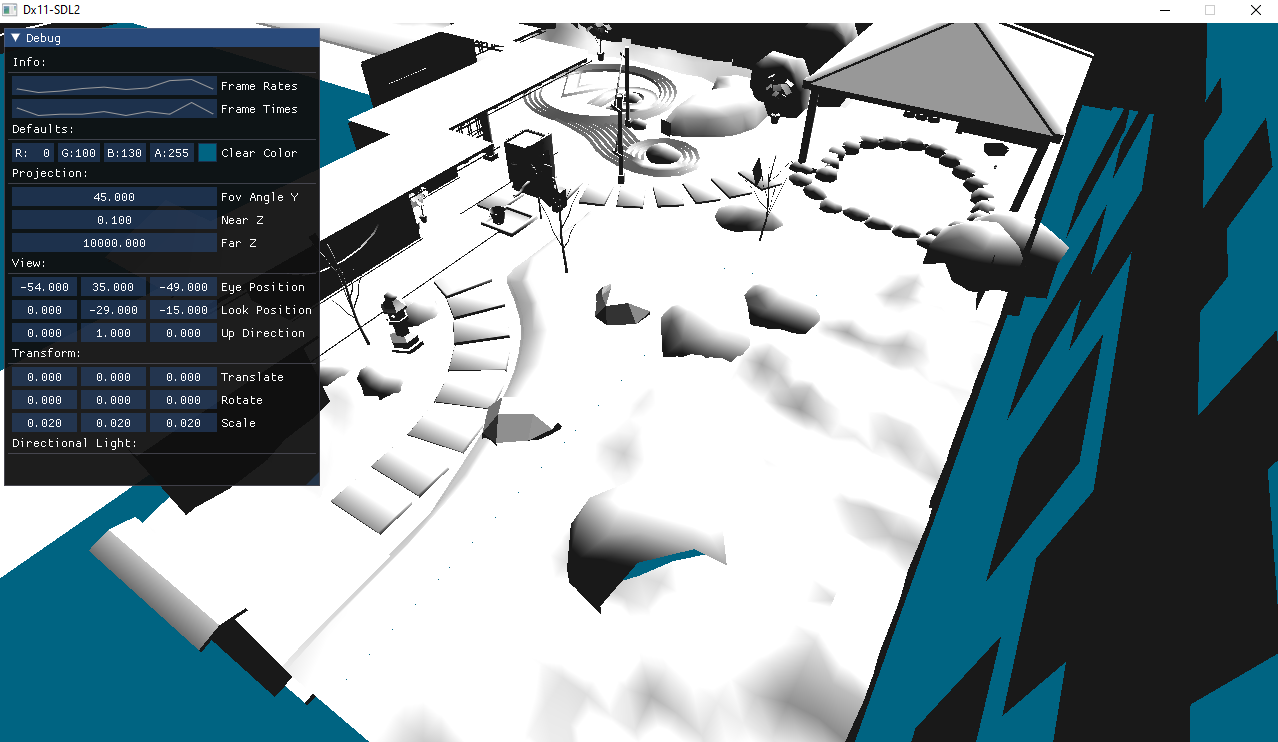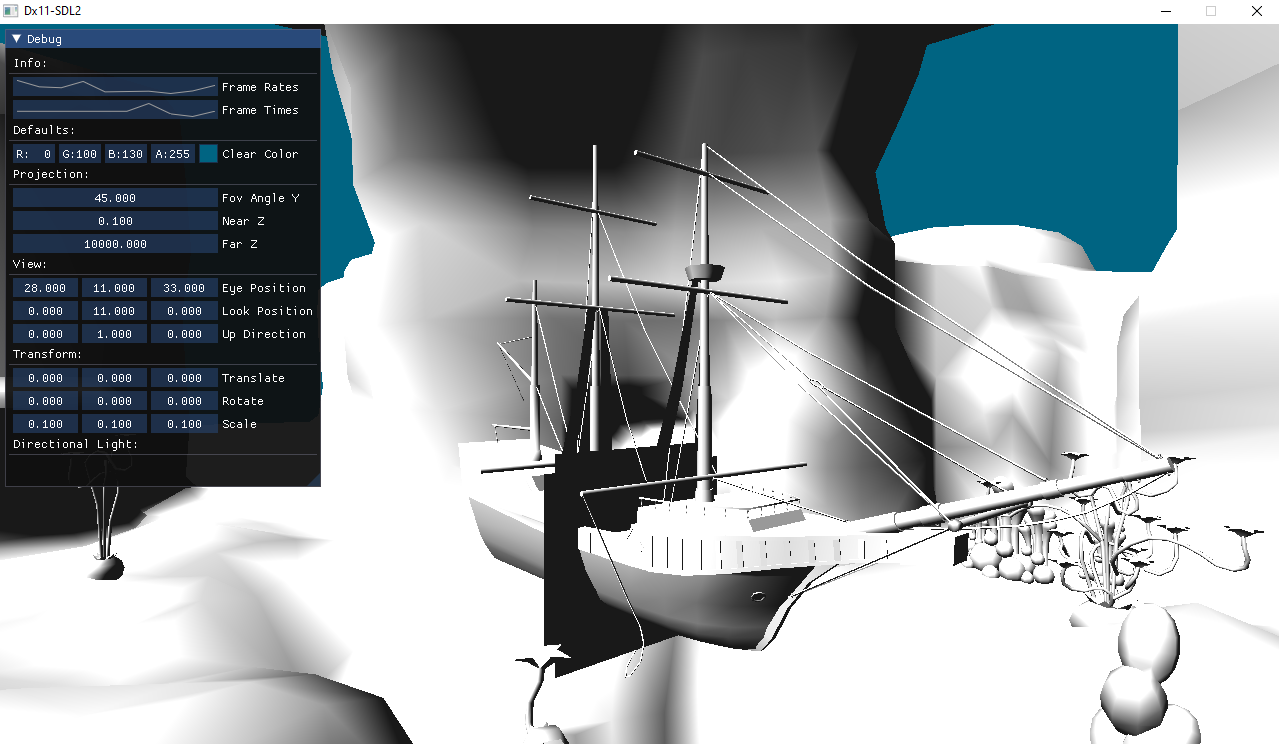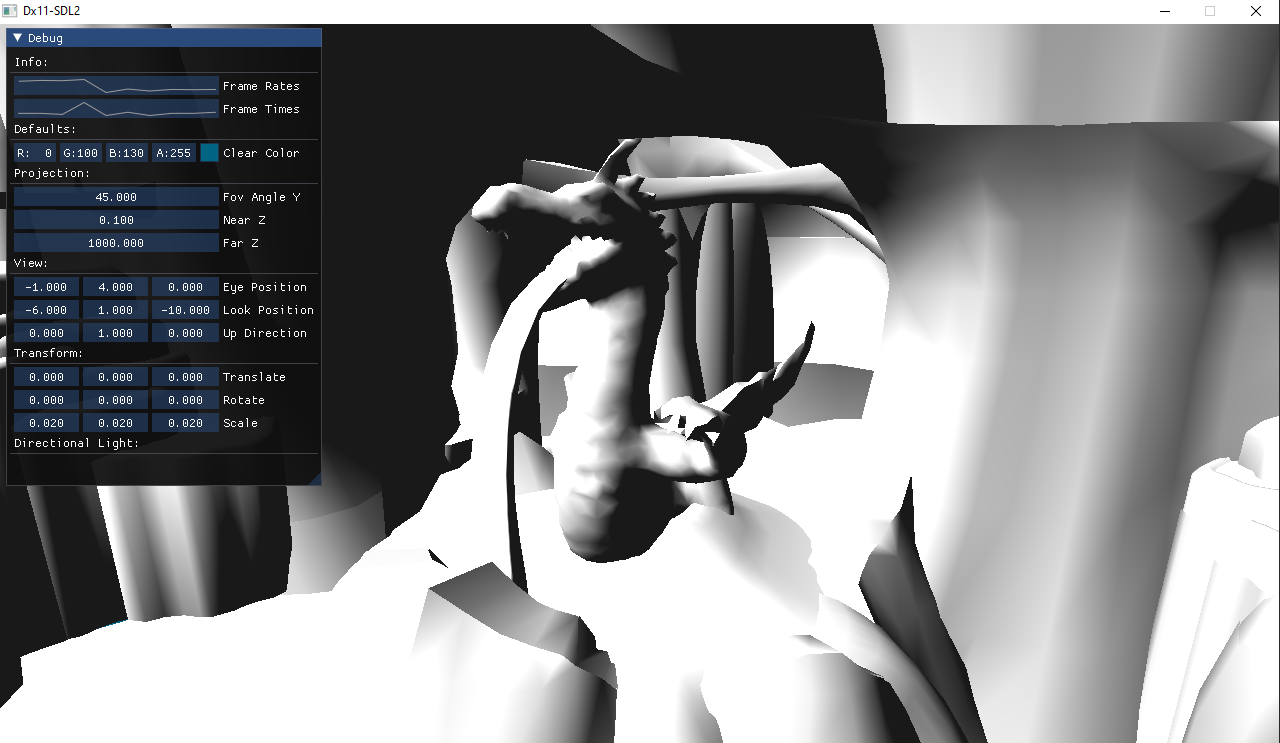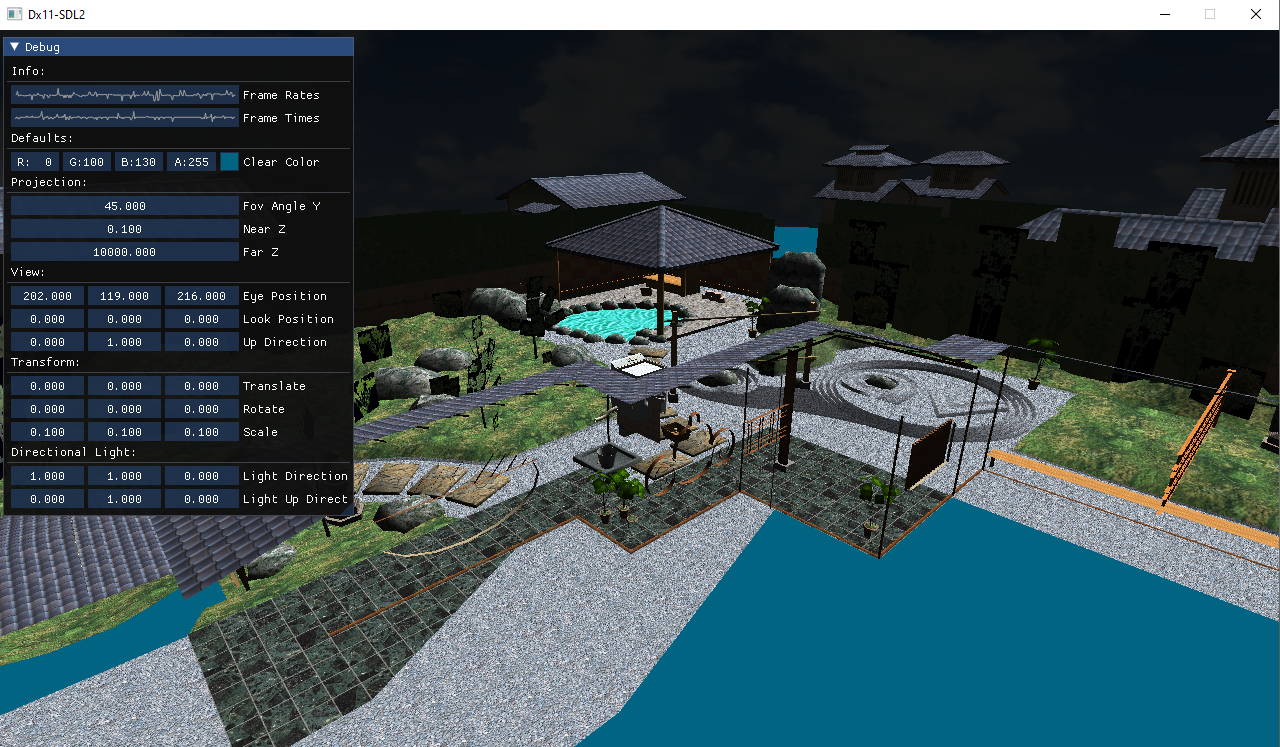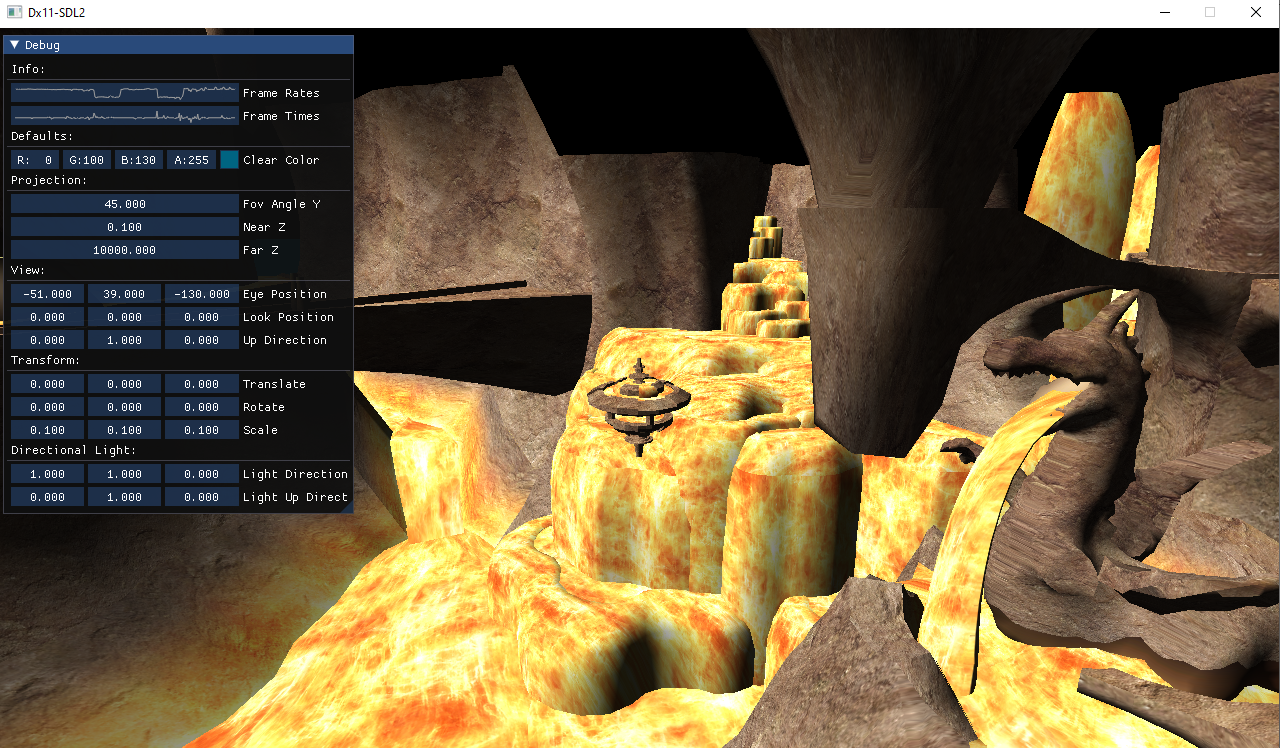Test bench renderer with Dx11
Type: Demo
Source: Personal Project
Language: C++
The goal of this project is to setup an environment where I can implement some rendering techniques in a Dx11 engine that I setup myself. For now I am thinking of being able to select a model to render from an OBJ file (I did write a very simple OBJ parser for this project).
For now, I rely on 3 main libraries to work on this project:
- SDL2: So I can access OS and hardware functionality without writing Win32 code myself.
- ImGui: So I can easily add some debug information and controls so I can test the state of the renderer as it is running.
- DirectX Math: So I do not have to implement my own functions to handle all the vector and matrix maths needed for this project. Can also help making sure the maths logic is well optimized.
I am still in the process of writing the base of the renderer as of now, but I plan to add some features as I go to test my implementations of techniques found in graphics programming papers online.
- Shadows: I would like to try out different style of shadow rendering:
- Basic shadow maps
- Cascading shadow maps
- Variance shadow maps
- Bloom
- Depth + Stencil visual effects
- Cloud rendering / simulation
- and more to come
Please keep up with my updates to this project in the future.
| Update from 2022-5-22 |
When I first wanted to be able to load model information from OBJ files, I wrote a very simple function to read and parse an OBJ file and return the vertex positions, UVs and normals. I then use this data as a vertex buffer that I upload on GPU for renderning. As I was looking on the internet to download more example models, I noticed that some OBJ file will also contain some information related to materials (like textures used for certain meshes). I think it would be interesting to rework my renderer logic to be able to handle multiple meshes as well as some texturing. In order to do this, I will need to work on a couple details:
- Reading the vertex data like before but store meshes independently
- Return an array of meshes to render one at a time to the renderer
- Read the material file if one is found
- For every mesh, find out the material that should be used
- List textures to be uploaded to GPU memory per meshes
- When rendering, we need to bind the correct texture
I would see this feature as a nice to have for now, but I would be curious to see what kind of work in needed to handle these situations.
| Update from 2022-7-05 |
As of now, I am working on adding a shadow mapping pass to the renderer. I am currently adding a directional light only since this is going to simplify the implementation. My goal with this task is that I understand better the base steps needed to achieve this visual effect in computer graphics renderer.
With the new knowledge built from this exercice, I can then understand better the challenges of adding different light types to shaodw mapping algorithms (points, spots) and different more involved algorithm for rendering shadows (variance shadow map, cascading shadow maps)
I think that after I am able to render shadows properly, I will consider this project to be completed for now as I am curious to move onto different topics in the computer graphics sphere. I will make sure to update this website with my next project as well.
| Update from 2022-8-23 |
Quick update this time to mention two things. I recently updated this project to use a better algorithm to load the 3d model data used to render in the application. Before, I wasn’t using any index buffers when rendering. I was simply duplicating every vertex each time it appeared in a triangle. This is obviously wasteful. I updated my OBJ file loader so that it will create a list of all the unique vertices found when loading the model data and then create an index list that will refer to the vertices already in memory. We then avoid vertex duplication. I am also using the DrawIndexed calls from the Dx11 API now to handle this new feature.
Another really simple update I made is that I am now able to load an OBJ file that has multiple sub-meshes contained in them. In order to simplify the rendering afterwards, I also added a function to merge all the sub-meshes in one so I only have to upload one vertex and index buffer pair to the GPU. This also lets me use models that I found online for my tests that were taken from one of my favorite games of all time: Super Monkey Ball 2 for the Nintendo Gamecube.
I will look into shadow maps for this project, I was just sidetracked by other features that I thought would look good and would be interesting to implement! See you next update.
| Update from 2023-9-30 |
I came back to work on this project recently. My first goal was to rework the rendering logic in different files so different sections of the project are easier to find. I landed on adding these files to the project to split the rendering work:
- UploadPass.h / UploadPass.cpp
- Upload texture and model data to GPU memory
- ModelRenderPass.h / ModelRenderPass.cpp
- Bind vertex buffers, index buffers and textures needed
- Record all model’s draw calls
- UIRenderPass.h / UIRenderPass.cpp
- Call all functions from IMGui library to render all the debug UI
- SmokeRenderPass.h / SmokeRenderPass.cpp
- Started working on cloud rendering using raymarching
I hope to have new screenshots soon showing the progress made on the smoke / cloud rendering. See you next update.
